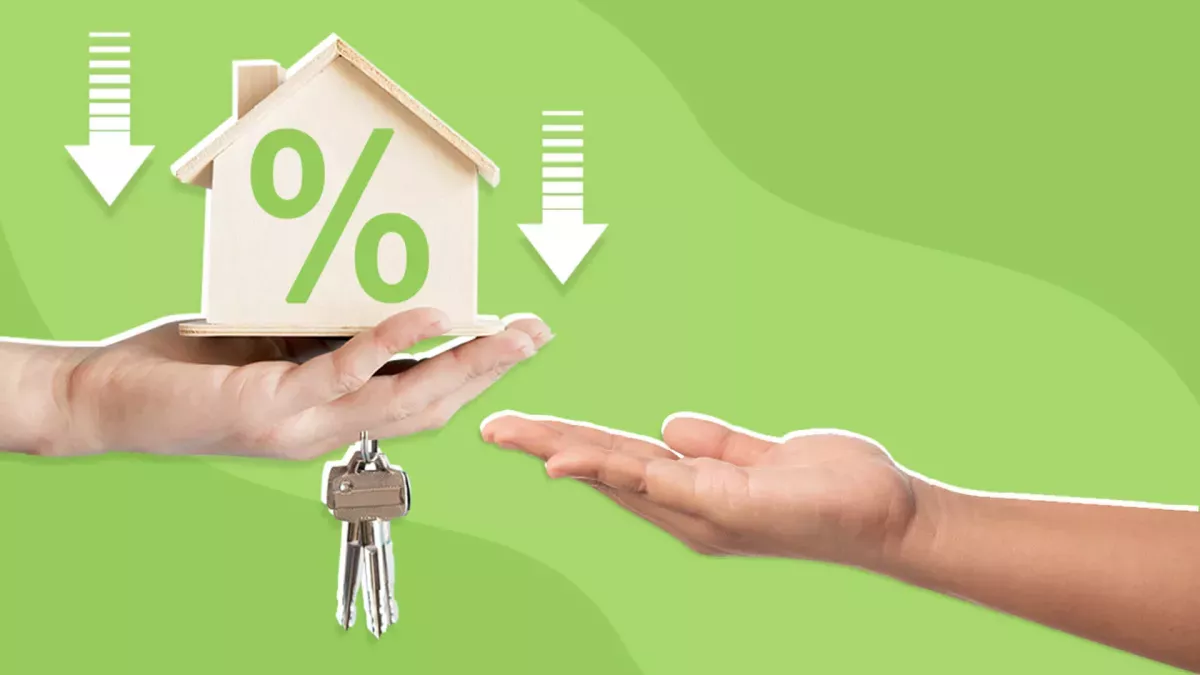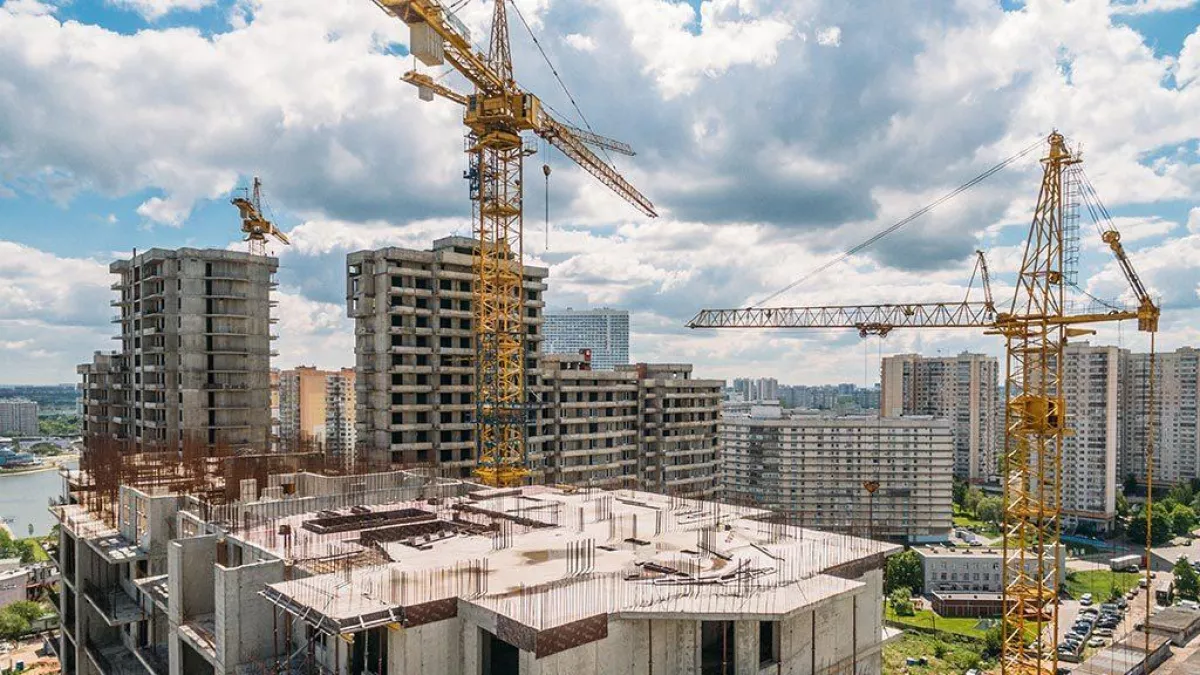How to cool down Baku’s overheated housing market Analysis by Caliber.Az
Baku’s real estate market is facing several challenges. Over the past three to four years, the pace of new housing construction has been relatively slow, while apartment prices have surged sharply. In 2024–2025, borrowing through the Azerbaijan Mortgage and Credit Guarantee Fund (AMCGF) also declined.
According to the Central Bank of Azerbaijan’s (CBA) recently published semi-annual Financial Stability Report, housing prices in both the primary and secondary markets have risen by 46% over the past five years. Moreover, the CBA estimates that in the first half of this year, the growth in housing prices has outstripped the increase in household incomes by a factor of two.
The construction industry, which was highly profitable in the past, has faced strain in the post-pandemic period due to several factors that have increased construction costs and reduced the volume of housing built in the capital and regions. A key role here was played by imported inflation, which drove up the prices of building materials and construction machinery. At the same time, domestic expenses for fuel, transport, contracting, and design services increased, along with labour costs. In the previous three to four years, the price dynamics were further accelerated by the rapid rise in the cost of land suitable for construction in Baku, Sumgayit, the Absheron Peninsula, and some other urbanised regions of the country.
According to data from the State Statistical Committee of the Republic of Azerbaijan, the capitalisation of the country’s construction market fell by 5.8% in 2022, while construction volumes declined by 3% in 2023, with the downturn in residential construction continuing into 2024. Even accounting for the unprecedented surge in infrastructure, social, and residential projects in Azerbaijan’s territories liberated from occupation, overall residential construction growth in recent years has shown limited momentum.
The situation improved somewhat in the first half of 2025. According to the Central Bank of Azerbaijan’s Financial Stability Report, the nominal gross domestic product of the construction sector grew by 12.4%, and its share of total GDP rose by 0.5 percentage points compared to the same period last year. In January–June 2025, investments in residential construction exceeded 1.333 billion manats ($784 million), representing 16.5% of all fixed capital investments.
The report notes that, in addition to large-scale construction projects in the Karabakh region, this positive trend is supported by the restoration of investment flows into the sector, the execution of major projects in Baku and its suburban areas, and sustained strong demand in the real estate market. “In particular, with the ongoing formalisation of legal ownership of houses without documentation, based on the President’s directive, activity in the construction sector and real estate market is expected to remain high,” the report states.

In any case, the effects of the decline in residential construction in past years continue to be felt today in the reduced supply of ready-to-move-in housing in Baku’s new developments, which, coupled with the strong demand for housing, inevitably drives up prices. Despite the approval of the capital’s Master Plan at the beginning of last year, construction permits are still being issued in limited numbers. In addition, many construction companies have adopted a wait-and-see approach, anticipating the allocation of buildable plots in Baku’s most promising districts.
On the other hand, building regulations that were updated a few years ago require strict compliance with construction rules, preventing developers, as in the past, from increasing the density of developments by reducing non-residential space, and this also limits the dynamics of the construction market.
In recent years, amid inflationary risks, activity among corporate buyers with investment purposes has increased, particularly in purchasing apartments in new developments as long-term investments. Interest in the capital’s real estate is also growing among former compatriot entrepreneurs repatriating their capital and businesses from Ukraine and Russia to Azerbaijan, which further adds pressure to market prices.
As a result, according to official statistics, residential property prices in Azerbaijan increased by 10% in 2024 compared to the previous year. The largest price growth was recorded in the new-build segment, which rose by 11.3%, while the cost of secondary housing increased by 9.8%. In the first half of the current year, the price growth of residential real estate in Baku, both in the primary and secondary markets, also remained in the range of 10–15%.
Today, apartment prices in Baku significantly exceed those in the capitals of other countries in the region, noted Nusret Ibrahimov, Chairman of the Chamber of Appraisers of Azerbaijan, in May this year. “The average price per square metre of residential property in Baku is around 2,400 manats ($1,411), which is noticeably higher compared to major capitals of the South Caucasus—Tbilisi and Yerevan,” said Ibragimov. “The high demand for housing in Baku is justified by its status as the region’s leading business centre. At the same time, the population density and the density of urban development in Azerbaijan’s capital are also significantly higher, which is reflected in land prices.”
These trends are also reflected in the recently published Financial Stability Report by the Central Bank of Azerbaijan (CBA): “In 2020, due to the pandemic, the real estate market experienced relative price stability; however, in subsequent years, there were clear trends of price growth. Over the past five years, housing prices in both the primary and secondary markets in Azerbaijan have risen by 46%.”
According to the State Statistical Committee, in the first half of 2025, the pace of housing price growth exceeded the growth of household disposable income. Compared to the same period last year, residential property prices increased by 13.8%, while disposable incomes grew by only 6.1%. Overall, the ratio of the average apartment price in Baku to the average monthly nominal salary remains extremely high, at 217 months—or over 18 years. In other words, if an average Baku resident were to save their entire monthly salary without any other expenses, it would take more than eighteen years to purchase an apartment.
High housing prices are further compounded by a slowdown in mortgage lending. In 2024, the volume of mortgage loans issued by banks acting as agents of the AMCGF amounted to 440.1 million manats ($260 million), 4.6% lower than in 2023. This negative trend has continued into 2025: in January–August, banks issued mortgage loans totalling 304.7 million manats (approximately $180 million), 9.8% less than in the same period last year.

At first glance, the current demand for housing loans should stimulate the mortgage segment; however, a number of objective factors are limiting the growth of loans through the Fund. It should be noted that the maximum amount available under commercial mortgages is 150,000 manats, and today it is simply impossible to purchase reasonably sized housing in Baku’s new developments for this sum. This significantly narrows the pool of potential candidates for mortgage loans. At the same time, banks have become noticeably less “interested” in mortgages: currently, commercial banks offer domestic mortgage loans at roughly 11%, which reduces their attractiveness for homebuyers.
The Central Bank of Azerbaijan’s Financial Stability Report explains the reasons for the slowdown in mortgage lending since 2023: “This decline can be attributed to both demand and supply factors. Rapid growth in housing prices and rising average interest rates on new mortgage loans have slowed mortgage demand. At the same time, the limited availability of mortgages issued through the AMCGF and the structure of bank financing constrain their ability to expand mortgage lending using their own funds.”
In recent years, social mortgage loans—with their preferential 4% annual interest rate, 10% down payment, and 30-year repayment term—have remained the most in-demand product of the AMCGF. These social loans are often implemented through projects of the State Agency LLC MIDA, which is responsible for constructing the country’s most affordable housing. However, the volume of social mortgages largely depends on the budgetary funds allocated for this purpose. In January–August 2025, government budget allocations for social mortgages decreased by 27.4%, from 66 million ($39 million) to 47.8 million manats ($28 million).
Accordingly, in the foreseeable future, expanding the volume of social mortgages and increasing housing construction through MIDA remain the two main measures capable of exerting downward pressure on housing prices and ensuring affordable liquidity in the market.








